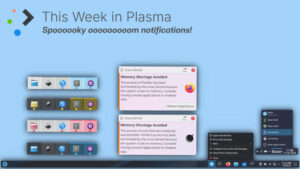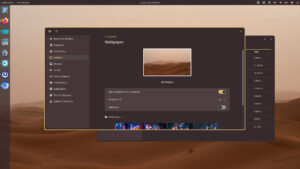To great fanfare, Fedora 22 was released to the wider world yesterday. And to those who awaited it with bated breath, it does not disappoint.
A word to the uninitiated: As many of you already know, in the broadest terms, Fedora is a testbed for Red Hat Enterprise Linux. Developments in Fedora – and there are many, leading to its cutting-edge reputation (which wrongfully scares some users from using it; more on this later) – sooner or later end up on RHEL for the commercial market.
 Since the introduction of Fedora.next — the umbrella program for the roadmap for the distro going forward — the distro comes in three basic flavors: Workstation, Server and Cloud. Workstation is the desktop/laptop version — and workstation version for businesses. Cloud and Server are pretty self-explanatory.
Since the introduction of Fedora.next — the umbrella program for the roadmap for the distro going forward — the distro comes in three basic flavors: Workstation, Server and Cloud. Workstation is the desktop/laptop version — and workstation version for businesses. Cloud and Server are pretty self-explanatory.
Of course, there are different desktop spins for Fedora 22: Along with the default GNOME, desktops available for Fedora 22 include KDE, Xfce, LXDE, MATE-Compiz, and Sugar on a Stick, for those of you who want your Fedora experience to resemble what students see on their OLPC XO machines.
Many of the changes in Fedora 22 come in the Cloud and Server versions, though one change stands out across the board. DNF, an updated package manager that has been around in development since Fedora 18, finally makes its debut here, replacing Yum. DNF provides faster installs and updates while keeping the Yum command-line interface compatibility — but instead of “yum” you’ll be typing “dnf” on the command line. Pretty simple, no?
The Workstation default desktop, of course, is GNOME 3.16, and one standout feature for developers is the Vagrant development software, an open-source program for creating development environments across operating systems. One of the perks of Vagrant is that it does not require third-party virtualization tools to run.
Containers are the key component in the Cloud version. The Fedora 22 Atomic Host includes the Atomic command, a coherent entry point for managing hosts and containers. Updated versions of Cockpit, Docker and Kubernetes are included, and it’s now possible to run Fedora within a Docker container. The aforementioned Vagrant is featured in this version, too, which will enable developers to share work with others.
Added support for PostgreSQL and the addition of Rolekit — software which manages server roles — highlights the Server version. Fedora 22 Server also defaults to the XFS file system, a high-performance, scalable file system with a main feature of quicker crash recovery as well as allowing for maintenance windows, limiting downtime.
Test Drive: Fedora 22 Xfce
I’m in the driver’s seat of Fedora 22 Xfce because, well, it’s my desktop of choice. Your mileage may vary, of course, with whatever you use, and if it works for you, that’s great.
As I mentioned earlier, since Fedora is pretty much the test track on which Red Hat prepares its high-performance enterprise system, you might find some limitations to what’s available by default on each of the downloads; limitations that may not lend themselves to wider acceptance across the FOSS board. We get that, but at the same time it hamstrings Fedora, tragically. Not having things that are readily available on other distros may keep casual users away and perpetrates the silly myth that its “cutting edge” nature means it can only be used by experienced Linux users. The silver lining here, however, is it opens the door for quality distros like Korora, based on Fedora, to add the bells and whistles that Fedora lacks out of the box for wider FOSS acceptance.

Click image to enlarge.
As a long-time Fedora user, I do know the drill: Install, do the Flash install, and in the Xfce spin’s case, add some of the software that needs adding. Firefox replaces Midori — sorry, Midori folks — LibreOffice goes immediately on (please, Xfce spin folks, include LibreOffice as part of the default install; Abiword is nice, but LibreOffice is, well, miles ahead), and off we go.
Once the system is set up to my liking, the performance is nothing short of stellar. Downloads are quicker thanks to DNF — which stands for Dandified Yum (an unfortunate set of initials: at least you can make “tasty” jokes at Yum but DNF, in auto racing parlance, means Did Not Finish). Web surfing and the trappings that go with it, once the modifications are made, absolutely fly on my ThinkPad.
Conclusion
In a sentence, it’s another winner in a long line of winners from Fedora.
If you’re a Fedora user, you’ll love Fedora 22. If you’re not a Fedora user and want to try it, it’s worth the effort to get it to where you want it. The caveat here is that you may have to tweak it a bit to do what more mainstream distros like Linux Mint or Ubuntu do out of the box. If you’re up to it, then go for it.










RPM Fusion missed the boat, the repos are not available even from the main site
http://download1.rpmfusion.org/free/fedora/releases/
I like Linux as much as the next guy…. But those updates ….. sheesh.
Breaks something 8 out of 10 times. All I really care about is a system that simply works day after day. Why is that so hard.
I want sound and I want flash to work permanently. Get it ?
I’ve been using Fedora since release 14….and its STILL the most awesome distro I’ve used! I don’t mind having to add things to a plain install, that was the biggest attraction for me about Linux, being able ti stick in what I want…and not having to remove excess fat every time I installed it. To those who think it’s too much work installing Flash or codecs, or the office suite of your choice, you should try Arch Linux or Slackware!…you’d go nuts! but for those who know their way around a Command Line, and can read documentation online. Fedora is excellent, PLUS if you ever get the urge to make it a profession, you can go for the RHEL and use Fedora as your training grounds!! Hats off to the developers on this one….looking forward to the next release!
I’ve been using Fedora since Fedora Core and before that I used the red box versions of RH Linux. The point is that I’ve been down the upgrade path many, many times. It seems to almost never be straightforward.
For instance, looking at the installation guide we learn that netinstall media is recommended. Is there any statement about where to find netinstall media? Nope. Nowhere I found.
Hunting around, you can find under “netinstall” the following statement: “The Fedora Server netinstall image is a universal one, and can be used to install any Fedora flavor or your own set of favorite packages.” Aha. You gotta go to a particular one of the installation styles to then get the netinstall image. Oh, and if you want to install a generalized desktop you probably need to start with the “server” version. Intuitive much?
Don’t get me wrong. I love Fedora. I just hate the searching around for all the missing pieces of documentation. There are paragraphs of description about making a boot usb drive and no direct set of links to the “this is how you get media to install a general version via netinstall.”
Then there’s Fedup. That’s the preferred way to upgrade from previous versions of Fedora. Except you need to pour through the perhaps incompletely documented list of gotchyas that you might trip over: eg the proprietary nvidia driver will fail to upgrade and leave you blind.
Oh well, I’ll slog through it and be happy in the end even if I have to reinstall a couple of times to make it all work.